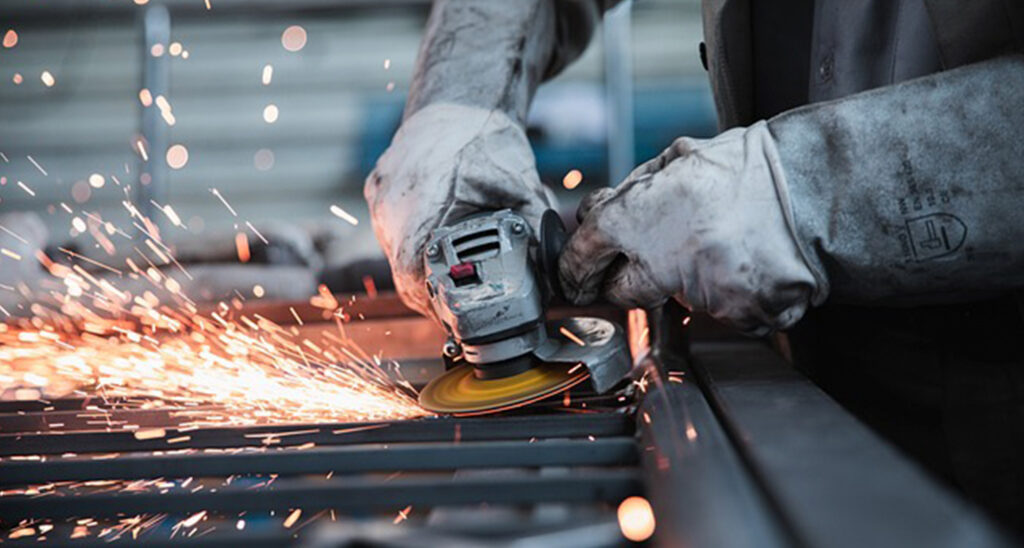More and more property owners have chosen to build their structures using steel as the main material. Not only does steel make their buildings strong and durable, but it also is a cost-effective solution for their construction.
However, there should also be enough care and planning when choosing steel materials. After all, you would not want to use low-quality steel.
As someone who is convinced that steel building is right for you, you would want to know how to choose high-quality steel. Well then you have come to the right place.
Read on.
Understanding Steel Grades, Industry Standards, and Their Impact on Material Selection
When selecting steel materials for a project, it is crucial to understand the various grading systems and standards that define their quality, strength, and performance. Different global organizations, such as the American Society for Testing and Materials (ASTM), the American Iron and Steel Institute (AISI), and the International Organization for Standardization (ISO), establish rigorous guidelines for steel classification. These standards outline the chemical composition, mechanical properties, and recommended applications for different grades of steel, ensuring consistency and reliability across industries. Without a clear understanding of these classifications, selecting the right steel for structural, manufacturing, or industrial use can be challenging.
Steel is categorized into different grades based on its composition and intended function. For example, carbon steel is widely used in construction and manufacturing due to its affordability and strength, while stainless steel is preferred in environments that require corrosion resistance, such as food processing or medical applications. Alloy steels, which include elements like chromium, nickel, and vanadium, offer enhanced durability, making them suitable for heavy-duty machinery, aerospace, and automotive components. Recognizing the differences between these steel types is essential for making informed purchasing decisions that align with a project’s specific requirements.
Another crucial aspect of steel selection is understanding the numerical grading systems used to classify different steel types. The AISI-SAE system assigns four-digit numbers to steel materials, with the first two digits indicating the primary alloying elements and the last two representing the carbon content. Similarly, ASTM provides a comprehensive system that categorizes steels based on their structural properties, heat treatments, and corrosion resistance. Familiarity with these systems allows manufacturers, builders, and engineers to choose the correct steel grade, ensuring optimal performance, longevity, and compliance with safety standards.
Evaluating Steel Strength, Durability, and Performance in Different Applications
The strength and durability of steel play a critical role in determining its suitability for different applications, ranging from building structures and industrial machinery to consumer products and transportation equipment. High-quality steel must possess excellent mechanical properties, including tensile strength, yield strength, and impact resistance, to ensure it can withstand mechanical stress, environmental exposure, and long-term wear. Engineers and manufacturers rely on these properties to assess steel quality, ensuring that the selected materials meet project demands.
One of the key methods for evaluating steel strength is tensile testing, which measures the maximum amount of force a material can withstand before breaking. Higher tensile strength indicates superior resistance to stretching or pulling forces, making it an essential characteristic for load-bearing structures and high-stress applications. Similarly, yield strength refers to the stress level at which a material permanently deforms, which is critical for ensuring steel maintains its shape under continuous pressure. When selecting steel, balancing tensile and yield strength is crucial for maintaining both flexibility and rigidity, especially in applications where structural integrity is paramount.
Durability is also influenced by hardness, wear resistance, and environmental factors such as moisture and temperature fluctuations. Harder steel materials are more resistant to deformation under heavy loads, making them ideal for use in industrial tools, machine components, and reinforced construction beams. However, extremely hard steel can sometimes be brittle, leading to potential cracking under impact. Therefore, selecting steel with the right balance of hardness, ductility, and corrosion resistance is essential for achieving long-term performance in various applications, from infrastructure projects to precision engineering.
Corrosion Resistance and Protective Coatings
Corrosion resistance is a major consideration when choosing steel, especially for structures exposed to moisture, chemicals, or extreme temperatures. While some types of steel, such as stainless steel, naturally resist rust and corrosion, others require additional protective coatings to enhance their longevity.
One common method to improve corrosion resistance is galvanization, where steel is coated with a layer of zinc. This process prevents rust formation by creating a protective barrier against moisture and oxygen. Another option is applying powder coatings or epoxy finishes, which offer additional protection in harsh environments.
Weathering steel, also known as Corten steel, is another corrosion-resistant option that develops a stable rust-like appearance over time, preventing further deterioration. Choosing the right type of steel and protective coating ensures durability in different environmental conditions.
Weldability and Machinability Considerations
For projects that require welding or machining, it is important to choose steel with good weldability and machinability. Some steel grades are easier to weld and shape than others, affecting manufacturing efficiency and structural integrity.
Low-carbon steels, for instance, have excellent weldability because they contain minimal carbon content, reducing the risk of cracking during welding. On the other hand, high-carbon steels may require preheating and special techniques to prevent brittleness. Choosing a steel grade compatible with standard welding methods ensures strong, secure joints.
Machinability refers to how easily steel can be cut, drilled, or shaped using tools. Free-machining steels contain additional elements like sulfur or lead, which help reduce friction and tool wear during machining. Selecting steel with high machinability improves production efficiency and reduces overall costs.
Environmental and Sustainability Factors
Sustainability is becoming an increasingly important factor in material selection. High-quality steel should not only perform well but also meet environmental standards and minimize waste. Recycled steel is an eco-friendly option that maintains the same strength and durability as newly manufactured steel while reducing carbon emissions and resource consumption.
Choosing steel produced through sustainable manufacturing processes, such as electric arc furnace (EAF) production, also helps lower environmental impact. EAF methods use recycled scrap metal, reducing the need for virgin ore extraction and decreasing energy consumption.
Certifications such as LEED (Leadership in Energy and Environmental Design) and Environmental Product Declarations (EPDs) provide assurance that steel materials meet sustainability requirements. Considering these factors when selecting steel ensures a balance between performance and environmental responsibility.
Supplier Reliability and Quality Assurance
Selecting a reputable steel supplier is just as important as choosing the right steel grade. Reliable suppliers provide high-quality materials that meet industry standards and undergo rigorous testing for strength, durability, and corrosion resistance. Conducting background checks on suppliers and reviewing their certifications can help ensure you receive steel that meets your project’s specifications.
Quality assurance processes, such as mill test reports (MTRs), verify the composition and mechanical properties of steel materials. These reports provide detailed information on chemical analysis, hardness, tensile strength, and other critical factors. Working with suppliers who provide MTRs guarantees transparency and confidence in material quality.
Additionally, checking customer reviews, testimonials, and case studies from past projects can offer insight into a supplier’s reliability. Consistently high-quality steel products from a trusted supplier contribute to successful construction, manufacturing, and industrial applications.
Cost-Effectiveness and Long-Term Value
While cost is an important consideration, choosing high-quality steel materials should not be based solely on price. Investing in premium steel with superior strength, durability, and corrosion resistance provides long-term value by reducing maintenance and replacement costs.
Lower-quality steel may be cheaper initially but can lead to costly repairs and premature failures. Evaluating the total lifecycle cost of steel materials—including maintenance, durability, and performance—ensures a more cost-effective investment in the long run.
Bulk purchasing, supplier partnerships, and considering locally sourced steel can also help optimize costs without compromising quality. Finding the right balance between affordability and performance ensures the best return on investment for any project.
Conclusion
Choosing high-quality steel materials requires careful evaluation of factors. These factors include strength, durability, corrosion resistance, weldability, and environmental impact.
As a property owner, you need to understand steel grades and standards. This is to ensure you get the right material selection for specific applications. Partnering with reputable suppliers and prioritizing long-term value over short-term cost savings leads to successful projects and enhanced structural integrity.
Businesses and individuals can invest in steel materials that provide reliability, sustainability, and lasting performance by making informed decisions.

